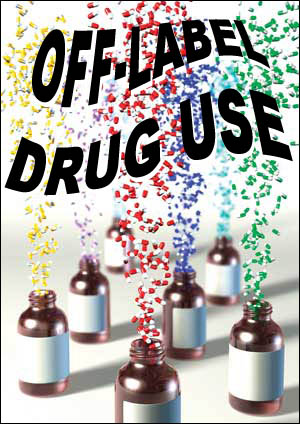What’s at Stake in the Off-Label Debate Freedom of speech may be the legal issue, but reducing drug trial costs is the business goal The FDA defines off-label Rx drug use as, “use for indication, dosage form, dose regimen, population or other use parameter not mentioned in the approved labeling.” In the US, it is legal for doctors to write off-label prescriptions. Up until now, it has not been generally legal for pharmaceutical companies to promote any drugs they manufacture for off-label use.
The FDA defines off-label Rx drug use as, “use for indication, dosage form, dose regimen, population or other use parameter not mentioned in the approved labeling.” In the US, it is legal for doctors to write off-label prescriptions. Up until now, it has not been generally legal for pharmaceutical companies to promote any drugs they manufacture for off-label use.
Between January 1996 and October 2010, the U.S. government collected $7.9 billion from drug companies as part of settlements of off-label promotion cases brought against them. Recent court cases, however, are questioning the legality of FDA’s enforcement of its “blurry” off-label guidelines.
The most recent case was a 2-to-1 split decision by the 2nd U.S. Circuit Court of Appeals in New York that threw out the conviction of a sales representative for promoting off-label use of a prescription drug.
The majority decision written by Circuit Judge Denny Chin was based on last year’s Supreme Court ruling that “Speech in aid of pharmaceutical marketing . . . is a form of expression protected by the Free Speech Clause of the First Amendment.” According to Judge Chin, the “pharmaceutical representative’s promotion of an FDA-approved drug’s off-label use is speech” and he was prosecuted “precisely” because of his “speech in aid of pharmaceutical marketing.” Ergo, “we VACATE the judgment of conviction and REMAND the case to the district court.”
There are enough legal issues in this case to keep a boatload of constitutional and pharma lawyers busy for years. But let’s look at this from a different perspective — i.e., what pharma has to gain from this and what patients have to lose.
Topics include:
- Reveiew of the Caronia Case
- Pharma’s “Friend of the Court” Brief
- Pharma Citizen Petition Calls for New Regulations
- Podcast: Pharma Citizen Petition Calls for New Regulations
- Dissenting Opinion
- Survey Results
Download full article (PDF)
PMN1111-03
Issue: Vol. 11, No. 11: December 2012



![6 Digital Tools at the Center of Healthcare Digitalization [INFOGRAPHIC]](http://ec2-54-175-84-28.compute-1.amazonaws.com/pharma-mkting.com/wp-content/uploads/2021/04/6DigitalTools_600px-218x150.jpg)




![6 Digital Tools at the Center of Healthcare Digitalization [INFOGRAPHIC]](http://ec2-54-175-84-28.compute-1.amazonaws.com/pharma-mkting.com/wp-content/uploads/2021/04/6DigitalTools_600px-100x70.jpg)




